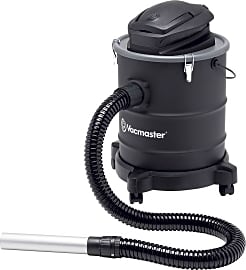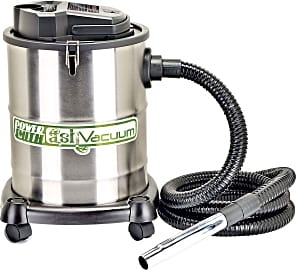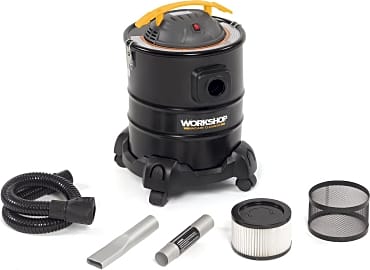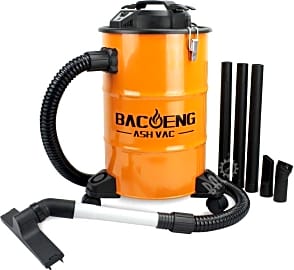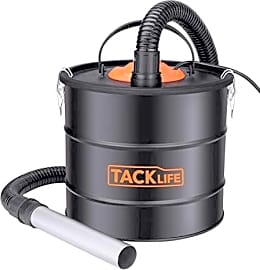The 8 Best Ash Vacuums

This wiki has been updated 39 times since it was first published in March of 2015. Cleaning the leftover debris from your fireplace, pellet stove, or barbecue pit is one of the messiest, and potentially most dangerous, chores around the house. But you can make it a lot easier and safer by using something from our selection of ash vacuums. These machines are specifically designed to handle the fine particles that can damage regular vacuums, as well as the heat from hot ashes. When users buy our independently chosen editorial selections, we may earn commissions to help fund the Wiki.
Editor's Notes
April 11, 2021:
I’ve left in all of our options from the previous update except from the Dustless Technologies Cougar, because I thought it was too expensive. I’ve also decided to add a few more models, purely because I thought that this list was fairly limited and could do with some more options, as this market isn’t struggling for want of high-quality ash vacuums. Brand variety was also maintained and I’ve added vacuums from brands like Craftsman which makes power tools, as well as Tacklife that makes high-quality home, garden and power tools. Do be mindful that these hot ash vacuums are built with very specific design features that makes them suited for use with hot ashes, and we wouldn’t recommend that you substitute your ash vacuum with any old wet/dry vacuum, despite what some of them advertise. There’s also not going to be a huge amount of variability in terms of horsepower or volume with these vacuums – due to their design purpose, most of them will be small and portable, and offer a 4-6 gallon capacity.
January 02, 2020:
We removed a couple of wet-dry vacuum-style models that, though they would probably be able to handle the occasional fireplace clean up, were not specifically made for regular ash removal. Not only do they lack the specialized filters to handle the extra-fine fireplace ash, but they are also made out of plastic that can easily melt.
We also replaced the PowerSmith PAVC101 with its updated version, the PowerSmith PAVC102. This new model has an extra-long 10-foot hose that really sets it apart from the competition.
Safety is extremely important when it comes to dealing with ash from fireplaces, charcoal grills, and pellet stoves. When choosing a vacuum, always make sure to carefully review its safety manual before use. Different models are designed for handling different temperatures of ash, so it's even more important to know exactly what your machine is capable of, and how to use it.
To be on the safe side, the City of Portland Fire Department recommends waiting 2-3 days if you really want to be sure your ashes are cool.
Choosing The Right Ash Vacuum
But as some ash vacuums cost many hundreds of bucks, it's not a choice that should be made without careful consideration.
Ash vacuums are used to remove the solid remains of a fire, e.g. the ashes themselves. These purpose built devices are a marked improvement on other ash removal options such as using a shovel and broom. This is true as an ash vacuum will not stir up dust, sending fine particulate matter into the air you breathe, and as these vacuums can safely capture hot embers, reducing the risk for a burn or for inadvertently starting a fire if the cinders end up near a combustible material.
Choosing an ash vacuum means added safety, cleanliness, and convenience when you take ashes out of your fireplace, barbecue, fire pit, or pellet stove. But as some ash vacuums cost many hundreds of bucks, it's not a choice that should be made without careful consideration.
The first factor you must weigh is simply the volume of ash you usually need to clean. If you are looking for a convenient and thorough way to remove ashes from your charcoal grill then one of the more compact (and lower priced) ash vacuums will likely suffice. Grills produce relatively small ash volumes when used with charcoal -- as opposed to the hardwood often used in long, slow smoking sessions -- and the charcoal reliably burns out completely if given a bit of time. The absence of hot embers after a grill has been left to burn out means units designed for cold ashes only are acceptable.
Ironically, smaller ash vacuums are also suitable for cleaning out pellet stoves despite the fact that these stoves are often constantly burning in some homes during the winter. That's so because pellet stoves burn so efficiently that they produce minimal ash. The person looking to keep a pellet stove clean need not own a large ash vacuum, but he or she should only get one that can handle got embers.
If you need a way to clean out a large wood burning fireplace, you need a large ash vacuum. This is the case not only because of the larger ash reservoir, but thanks to the larger, more robust vacuum tube and internal components. Few fires ever burn up every bit of wood added, thus there will be chunks of material of varying sizes left behind in the fireplace. These larger, partially burned remnants can easily clog a smaller ash vacuum, and the abundance of embers left smoldering after a fire can overwhelm the filters of smaller units as well, causing fire danger rather than mitigating it.
Tips For Maintaining A Cleaner Fireplace
The best way to keep a clean fireplace (and therefore a cleaner home) is to use your ash vacuum regularly and to carefully and thoroughly clean out the unit's filter frequently. An ash vacuum with a clean filter is your best ally in keeping a clean hearth and home, as it were.
Apply it liberally, let is sit for ten to fifteen minutes, and then scrub the solvent and soot away with a stiff brush.
But you can also create "cleaner" fires by burning the right kind of wood. Make sure any firewood you use is fully seasoned, having been given plenty of time to dry out. Freshly cut wood of many varieties can in fact be as much as 45% water; this green wood does not burn cleanly or efficiently, but rather produces a glut of smoke and leaves behind large, irregular chunks instead of small, fine ashes. Properly seasoned wood, on the other hand, is usually less than 20% water and will ignite more quickly and evenly and will burn up more fully, leaving ashes that are easy to remove from a fireplace or fire pit.
Cleaning your fireplace means periodically going beyond mere ash removal and actually scrubbing at the inside of the firebox, the doors, and even the grate used to hold logs. Before you commence a deep cleaning, remove the grate and place it outside for power washing with a hose and rough scraping with a stiff bristled broom. Then remove all the ash possible using your ash vacuum.
There are purpose built hearth cleaners available that can help cut through the sooty build up on the walls and doors of your fireplace, but many all purpose cleaners work suitably well. To remove stubborn soot deposits from brick or stone, you can mix one part liquid hand soap with one part standard table salt to create a thick paste that helps cut through the grime. Apply it liberally, let is sit for ten to fifteen minutes, and then scrub the solvent and soot away with a stiff brush.
A Few Words On Fireplace Safety
If your home regularly enjoys fires, you need to have a professional chimney cleaner visit your residence at least once a year; an even wiser idea is to have a service attend to your fireplace at the start and finish of each fire burning season. Chimney fires, which occur when the built up creosote deposited by previous fires suddenly ignites with the heat of the fire below, are dangerous and difficult to extinguish. It's imperative you prevent this issue through proper cleaning. (Creosote "sweeping" logs can remove some of the build up but must be used regularly to have any marked effect.)
Also have a professional inspect your fireplace's firebox, doors, and flue after you have bought a new home or every few years that you live in a residence.
Also have a professional inspect your fireplace's firebox, doors, and flue after you have bought a new home or every few years that you live in a residence. It's important to identify any cracks in bricks or grout that could release embers, and that you have doors that seal properly to keep smoke, ash, and embers in the fireplace where they belong.
Ensuring your fireplace is safe does not stop with inspecting it from the inside; make sure that your chimney is not overhung by any tree limbs or wires that could potentially catch fire. You must attend to any such hazards before even considering lighting a fire below.
A proper chimney cap -- sometimes known as a spark arrestor -- is also critical; check your local ordinances before adding or updating this feature, as many towns, cities, or rural regions have specific regulations pertaining to these items. Also look for bird's nests or debris that may have found its way atop your chimney during the warmer months.


